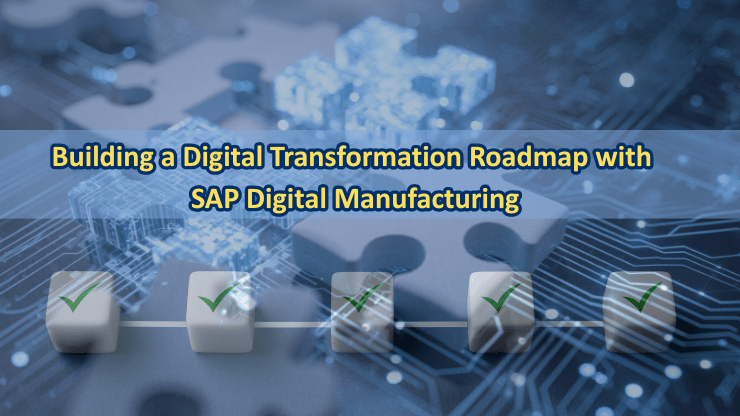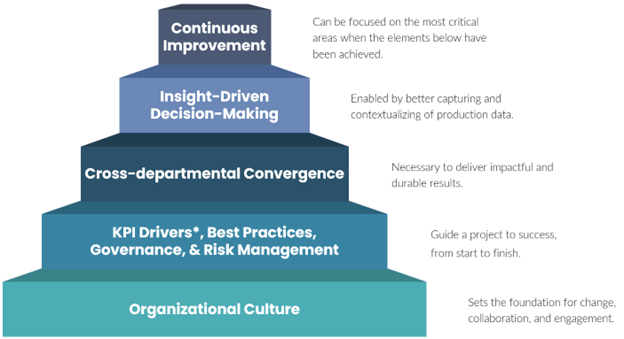
Authored by Christina Demuth and Joe Montagna
SAP Digital Manufacturing (DM) is SAP’s low-code, fully configurable, cloud-based MES. It enables streamlined operations and visibility across the entire manufacturing organization, connecting the shop floor to the top floor to optimize resources and efficiency.
In this blog, we’ll give you some key insights into developing the vision, strategy, and plan for your digital transformation with SAP Digital Manufacturing.
Defining the Vision for Your SAP Digital Manufacturing Transformation
Before diving into the detailed, day-to-day responsibilities that Digital Manufacturing will take on for your organization, it’s important for stakeholders to agree on the vision for transformation and to ensure that the vision aligns with the overall direction of the company.
The diagram below highlights a framework that we use to help organizations build their vision for any digital manufacturing transformation:
Digital Manufacturing Transformation Framework

KPI-driven assessments should drive strategy development and should cover all levels of the business – in manufacturing, that means at the asset, line, plant, and global business levels.
Key Steps to Building a Successful SAP DM Strategy
As we all know by now, digital transformation is not just about technology – it’s just as much about people and processes and how they all work together. Your SAP DM transformation will be more successful if you expect and embrace the possibility of:
- Business process changes.
- Shop floor and operational changes.
- Hardware, equipment, and other technology upgrades.
- Collaboration and integration with many departments (planning, production, quality, maintenance, material delivery and warehousing, HR, etc.)
Leveraging the full scope of changes will open doors to more streamlined processes, better analytics, and quicker innovations for the business.

Additionally, SAP DM is designed to support the common philosophy to “think big, start small.” Rather than a big bang, an incremental or pilot approach can easily be used, which allows you to prove value and then scale. You can choose to prioritize a certain area in a plant or a certain set of functionalities or business processes. In any case, a template will be developed that will streamline and standardize future rollouts (while still accounting for unique processes when necessary).
Planning to Implement
Before you begin your journey, we believe it’s helpful to understand the types of effort involved in a typical SAP DM implementation, which can include:
- master and transactional data work
- putting new system integrations in place
- replacing existing processes and systems (including paper-based workflows and approvals)
- configuration to leverage best practices through built-in workflows
- adopting new value-added capabilities
- building new analytics tools
- extending the solution to meet your unique needs (especially if they support your competitive advantages).
Stellium provides full implementation services; from discovery, design, and enablement to realization, testing, go-live, and hyper-care. We also provide future-readiness consulting, to help address the maturity of your processes and infrastructure and recommend steps to take you to an Industry 4.0 ready environment.
Next Steps and Support
SAP Digital Manufacturing is a powerful solution to transform production operations across industries. Stellium’s industry experience can help you develop a sound vision, strategy, and plan to maximize DM’s potential in your organization. Visit Stellium SAP DM solutions
